The model of revelatory change
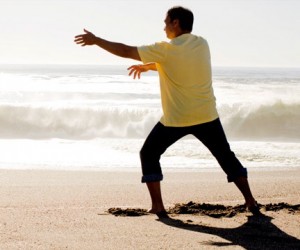 |
When we think about profound, important, transformative experiences in our lives, we often think in terms of a journey from one place to another. We think about a change from being closed to being open, from selfishness to generosity, from superficiality to depth. In our culture, people often anticipate that this journey will be more or less instantaneous, and that it will consist in a cognitive event — an epiphany, a revelation, a new understanding.
But Carolyn Gratton, in her book on spiritual direction, points out that this journey is not instantaneous; the journey is always a through (1992, p. 128). And the journey need not be a matter of thought or understanding or realization at all. Rather, we might simply find ourselves becoming kinder, or more patient, or less angry, or more balanced in any number of ways. We may not even recognize that the change is happening.
Here is a story. Many years ago, I helped lead vision fasts in the deserts of the southwest, in which the participants spent four days and nights alone in the wilderness with no tent, no food, and no fire. One man began his vision fast with high hopes that a solution to his personal problems was at hand; surely, he thought, in the solitude and quiet and lack of distraction he would come to understand what he needed to do. Four days and nights later, he came back to base camp deeply disappointed. He was distraught; he wept as he told his story. He had found his spot in a cave back in the hills; he had been hungry, lonely, and bitten by mosquitos; he had suffered for his vision, and, he said, nothing had happened.
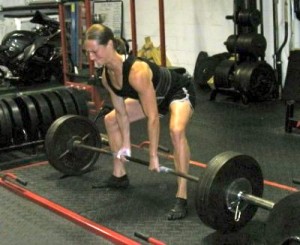 |
As we talked, I learned more about his journey. Bats had once lived in the cave, he told me; he had found piles of guano far in the back. He had seen ravens circling in the sky. He had watched a lizard sit under a creosote bush. Slowly he began to accept that the revelation he had sought was the experience itself — that the vision fast was not the end but rather the beginning of his journey through. Over a month, or six months, or a year, he would change, slowly, as he absorbed his courage and solitude and suffering.
I would like here to propose a challenge to the common sudden and revelatory model of transformation by thinking about certain kinds of body practices. I am referring to a set of activities one can do with one’s body that — slowly, subtly, and often unintentionally — moves the practitioner into calmness, balance, openness, and centeredness. Candidates for such transformative body practices may include — depending on how they are practiced — such activities as juggling, unroped rock climbing, surfing, skateboarding, windsurfing, weightlifting, distance swimming, modern postural yoga, or taiji quan.
The model of embodied transformation
What transformative body practices have in common is this:
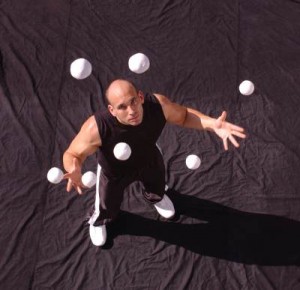 |
They are not competitive. Of course, it is possible to make a contest out of just about anything — there are, for example, yoga āsana contests (Beck, 2012; Lorr, 2014) — and it is certainly possible to be competitive with oneself. But competition involves comparison, and comparison is a mental movement through space or time: that person over there does this better than I do; I am doing this better than I did last week. By being noncompetitive, transformative body practices are centered not only on the present but also on a specific embodied space.
This is not the same as, say, a competitive athlete, during an event, feeling in the moment or out of time in an experience of what has been called flow. In fact, the concept of flow is in many ways inadequate to transformative body practices. As sport sociologist Barbara Humberstone puts it, “flow names occasions at which time stands still.” But that concept, she writes, may misrepresent “affective, embodied sensations, the sentience of the experience and the ways in which the body learns to move and be in the natural environment” (2013, p. 568). Rather, transformative body practices are themselves focused on a sense of present time and embodied location — right here, right now, in this space, in this body.
They are immersive. Transformative body practices are immersive in two senses of the the term — first, in its common usage as meaning engrossing, absorbing, totally involving; and, second, in a special sense put forward by geographer Nigel Thrift (2008, p. 57). Immersive practices, he says, reconnect us to biological time, as opposed to technological time (Haywood, 2012, p. 136; Richardson, 2012, p. 27) — “a means,” Thrift writes, “of gathering stillness, without having to stay still, a means of contemplation and mystical communion to be found within the body” (2008, p. 67). A “heightened awareness of movement,” he writes, “produce[s] an expansion of awareness of the present… [T]he mystical qualities of the world remain in place. Assured by a whole series of body practices, some old and some new, these practices have produced an expansion of awareness of present time” (p. 57). This is “the non-cognitve dimension of embodiment: the present moment, expanded awareness and ritual” (Ford & Brown, 2006, p. 161); this is “the temporality of the practice” (Macnaghten, 2003, p. 75).
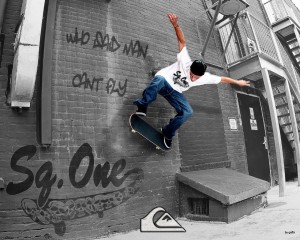 |
Thrift here utilizes the concept of “bare life,” which is what exists in the tiny interstice between consciousness and action, and which constitutes “the simple fact of living itself” (Thomas & Ahmed, 2004, p. 12). But bare life, Thrift claims, “is not bare. It is most of what there is” (2008, p. 57). It is, he says, following cultural theorist Giorgio Agamben, pure, real experience — “a mute infancy of experience… something anterior both to subjectivity and to an alleged psychological reality” (2004, p. 147). It is precisely in transformative body practices — “the ability to sense and freeze minute transitional body movements” (Thrift, 2004, p. 149) — that this interstice stretches out, becomes accessible, an immersive flow “from sweat to heart rate to muscles stretching” (Thrift, 2000, p. 47). As bodybuilder and feminist scholar Leslie Heywood puts it, “Rather than an enemy that needs to be transcended or its limitations conquered, the biological becomes something to be embraced” (2012, p. 134).
They are not productive. Transformative body practices are undertaken for their own sake, not as instrumental to some other end. They are performed for the inherent pleasure of moving the body skillfully through space. A transformative body practice eschews even counting, and is “experienced quite differently from the usual regime of measurement and statistics” in productive body practices (Heywood, 2012, p. 134). “Counting reps,” says bodybuilder and performance artist Joanna Frueh, “is measuring productivity. Counting makes one tense, expectant, and takes her away from pleasure” (2012, p. 227).
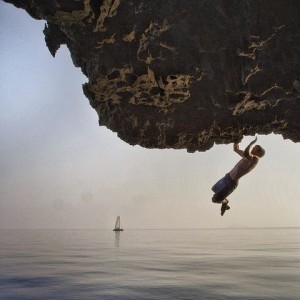 |
Potentially transformative body practices can forfeit their transformative character when performed for purposes of sport or fitness. Sport and fitness are productive activities, meant to produce, respectively, performance and the fit body. Sport can, of course, involve an internal focus while training, but the concentration on breathing, heart rate, or poundage lifted is instrumental to the goal of performance (Richardson, 2012, p. 136). Similarly, fitness practices are intended to produce bodily capital in the form of a fit body, and follow an “instrumental logic of reducing health risks, losing weight, improving appearance, and the pleasures of shopping for a slimmer, younger-looking body” (Maguire, 2008, pp. 143-144).
On the contrary, transformative body practices are meant to be just themselves. In this, they are essentially a form of play, because they are performed for the intrinsic and spontaneous pleasure with the activity itself (Maguire, 2008, p. 141). “Play is such an authentically human experience,” psychologist Mark Nesti writes, “because, unlike work, its focus is not on ends, but about means. In play the person experiences freedom within set constraints and limits; the output is, materialistically speaking, worthless” (Nesti, 2007a, p. 144).
They are practiced alone. Many of these activities can be done in a class or group setting; think of a yoga class, or a morning group taiji quan session in the park, or a highly social gathering of skateboarders. But these practices do not depend on others, and they become transformative just to the extent that they are deeply solitary. Their transformative quality is a matter of presence within one’s own body, a comfort with embodied solitude.
They are complex. These body practices require the coordination and simultaneous movement of multiple body parts. They are not easy to learn; their practice can be initially confusing; they require repeated practice, and the learning process is often frustrating. Many people begin such practices from a variety of motivations, usually productive, and then drop out from frustration and disappointment. The trajectory of practice goes from confusion through concentration to an increasing pleasure in the practice itself.
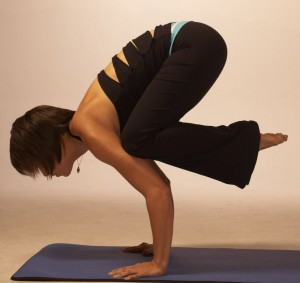 |
They demand balance. These body practices require a balance and centeredness that manifests to the observer as grace and fluidity in motion. Practitioners at the highest level all exhibit a dance-like grace of movement that is recognizably the same in a juggler, an unroped rock climber, and a taiji quan practitioner. Their balance and centeredness go beyond the technical aspects of the body practice to an inner center, linked to an economy of motion that in turn is a matter of presence — in time, in space, and in the body itself.
The fluidity and grace demanded by these practices is the result of a special kind of vigilance — as Barbara Humberstone puts it, “the engagement of mind-body moment by moment,” the full inhabitation of the moving, balanced body. Windsurfing, for example, is “the engagement of mind-body moment by moment. Windsurfing is a continual awareness and presence to the minute and subtle shifts of wind, water, and balance… the response of the mind-body engages states of consciousness and responsiveness beyond the capabilities of cognitive consciousness” (2013, p. 569). In these body practices, balance is thus dynamic rather than static. Morihei Ueshiba, the great martial artist, was once asked, “You never lose your balance. What is your secret?” “You are wrong,” he replied. “I am constantly losing my balance. My skill lies in my ability to regain it” (Spencer, 2012).
They are never finished. In the same way, these practices appear to the practitioner to be inexhaustible. Seemingly tiny adjustments to the body have a discernible effect on balance, fluidity, and presence. There is always more to learn; the practice can always go, as they say, deeper. These body practices embody ideals of perfection; they are constantly perfectible, and never perfect.
Slowly written in the flesh
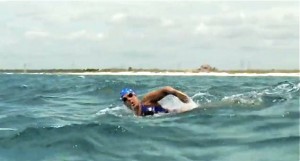 |
Although accounts of such body practices frequently emphasize the immediate experiences of risk, mastery, exhilaration, peace, and flow, we do find reflections on long-term embodied transformative effects as well. Margaret Emerson, a teacher of taiji quan, for example, calls her practice “an endless pursuit, exhilarating and often surprising. It’s the process of becoming myself… Closer and closer every day so that there’s less conflict within, more harmony, and therefore more strength” (1993, p. 2).
In the same way, rock climber Joshua Bennet (2013) writes: “It’s completely understandable to hunger for assurance that life-giving transformation exists and is present to our hopes and fears. Find that assurance on a rock… As long as you keep clambering over those rocks, each step is the new song. Keep on singing! Keep on rock climbing. Your body — and your spirit — will thank you. And peace of mind will follow.” And the pseudonymous rock climber and psychologist climbingpsych writes in her blog:
I have considered many of my experiences with rock climbing to be transformative over the years. From climbing I have developed a greater self knowledge, a greater sense of awareness of space and self, increased self-esteem, an ongoing feeling of accomplishment, community and a strong connection to the outdoors. For me, these developments have contributed to growth in other areas of my life. They have transferred into my work as a therapist, into my personal relationships, and how I carry myself in general (balance, self-awareness, and confidence in my physical abilities).
Surfing has generated a considerable literature regarding its spiritual aspects (e.g., Taylor, 2007; Heywood & Montgomery, 2008; Melekian, 2010; Ford, 2013), some of which embraces long-term embodied personal change. Bron Taylor, a professor of religion and nature who has played a leading role in this research, quotes one surfer as saying that surfing “makes one more compassionate toward both people and nature” (2007), and another as saying that it “puts you at one with nature, clears your soul of bad vibes, and can make you a more humble person” (2010, p. 105). And again: “I find myself every once in a while — for no special reason — looking skyward and saying ‘thanks’ to whatever strange cosmic forces wait behind it all. And, as weird as that sounds to some people, I know I’m not alone. In fact, I’m less alone than ever” (Taylor, 2010, p. 115).
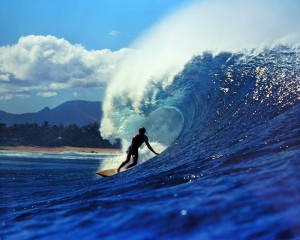 |
The same is true, as we might expect, for yoga — “a deeply transformative experience,” writes psychologist Michael Formica, “that can and will change your life, as it has mine and as it continues to do so every single day” (Formica, 2008). And, perhaps less expectedly, for juggling: “Juggling makes me more fun to be around, vital, and engaged in life” (Provencher, 2005).
I should make two points in order to prevent confusion. First, I am not saying that the body practices I am discussing are necessarily transformative; I am sure that there are, say, surfers who are fools and knaves. My claim instead is that, as I have described them, they may be transformative, and indeed that they often are; and, as such, that they thereby challenge the current instantaneous and cognitive model of personal transformation.
Second, I am not denying that these activities can also lead to peak experiences (Maslow, 1968; Ravizza, 1984) or experiences of flow (Csikszentmihalyi, 1990; Jackson & Csikszentmihalyi, 1999). These latter experiences can happen in competitive sport or other productive body practices. Rather, the body practices I have described — although they may have competitive or productive doubles — may be transformative independent of such experiences, which I think are phenomenologically distinct. In some cases, the pursuit of flow or peak experiences through athletic performance can itself turn the body practice into a productive one and thus subvert its transformative character. Indeed, it may be that participants begin one of these body practices with instrumental and productive goals, only to find the practice slowly — unintentionally and perhaps imperceptibly — becoming embodied, immersive, and transformative.
REFERENCES
Beck, S. (2012, March 4). Even smiles count, however exacting the competition. The New York Times. Retrieved December 26, 2013, from the New York Times Web site, http://www.nytimes.com/2012/03/05/sports/national-yoga-competition-tests-even-the-audience.html.
Bennett, J. (2013). The spirituality of rock climbing. Retrieved December 24, 2013, from the College Outside Web site, http://www.collegeoutside.com/articles/the-spirituality-of-rock-climbing.
climbingpsych. (2010). Rock climbing as a transformative practice. Retrieved December 23, 2013, from the Climbing Psychology Web site, http://www.climbinpsych.com/2010/08/rock-climbing-as-transformative.html.
Csikszentmihalyi, M. (1990). Flow:The psychology of optimal performance. New York: HarperCollins.
Emerson, M. Breathing underwater: The inner life of t’ai chi ch’uan. Berkeley, CA: Blue Snake Books.
Ford, E. (2013). “Life is not about chasing the wind”: Investigating the connection between bodily experience, beliefs and transcendence amongst Christian surfers.Paranthropology: Journal of Anthropological Approaches to the Paranormal, 4(1), 4-14.
Ford, N., & Brown, D. (2006). Surfing and social theory: Experience, embodiment, and narrative of the dream glide. London: Routledge.
Formica, M. J. (2008). Yoga as a vehicle of transformation. Retrieved December 13, 2013, from the Psychology Today Web site, http://www.psychologytoday.com/blog/enlightened-living/200806/yoga-vehicle-transformation.
Frueh, J. (2012). Aphrodisia and erotogenesis. In A. Locks & N. Richardson (Eds.). Critical readings in bodybuilding (pp. 215-230). London: Routledge.
Gratton, C. (1992). The art of spiritual guidance. New York: Crossroad.
Heywood, L. (2012). Building otherwise: Bodybuilding as immersive practice. In A. Locks & N. Richardson (Eds.). Critical readings in bodybuilding (pp. 122-139). London: Routledge.
Heywood, L. & Montgomery, M. (2008). “Ambassadors of the last wilderness?”: Surfers, environmental ethics, and activism in America. In M. Atkinson & K. Young (Eds.). Tribal play: Subcultural journeys through sport (pp. 153-172). Bingle, UK: JAI Press.
Humberstone, B. (2013). Adventurous activities, embodiment and nature: Spiritual, sensual and sustainable?
Embodying environmental justice. Motriz: Revista de Educação Física, 19(3), 565-571.
Jackson, S.A. and Csikszentmihalyi, M. (1999) Flow in sports: The key to optimal experiences and performances. Champaign, IL: Human Kinetics.
Lorr, B. (2014). Hell-bent: Obsession, pain, and the search for something like transcendence in competitive yoga. New York, NY: St. Martin’s Griffin.
Macnaghten, P. (2003). Embodying the environment in everyday life practices. The Sociological Review, 51(1), 63-84.
Maguire, J. S. (2008). Fit for consumption: Sociology and the business of fitness. London: Routledge.
Maslow, A. (1968) Toward a psychology of being. New York: Van Nostrand Company.
Melekian, B. (2010). Is God a goofyfoot? Retrieved December 20, 2013, from the Surfer Magazine Web site, http://www.surfermag.com/features/godgoofy/.
Provencher, E. (2005). Positive addiction. Retrieved December 15, 2013, from the I Can’t Stop Juggling Web site, http://icantstopjuggling.blogspot.com/2005/02/positive-addiction.html
Ravizza, K. (1984) Qualities of the peak experience in sport. In J. Silva & R. Weinberg (Eds.).
Psychological foundations of sport (pp. 452–461). Champaign, IL: Human Kinetics.
Richardson, N. (2012). Introduction to Part I: What is the “practice” of bodybuilding? In A. Locks & N. Richardson (Eds.). Critical readings in bodybuilding (pp. 21-28). London: Routledge.
Spencer, B. (2012). O Sensei, the art of peace, and the secret of balance. Retrieved December 14, 2013, from the Feeling Delicious Web site, http://www.feelingdelicious.com/2012/06/25/the-secret-of-balance/.
Taylor, B. (2007). Surfing into spirituality and a new, aquatic nature religion. Journal of the American Academy of Religion, 75(4), 923-951. Retrieved December 16, 2013, from the Journal of the American Academy of Religion Web site, http://jaar.oxfordjournals.org/content/75/4/923.
Taylor, B. (2010). Dark green religion: Nature spirituality and the planetary future. Berkeley, CA: University of California Press.
Thomas, H., & Ahmed, J. (2004). Introduction. In H. Thomas & J. Ahmed (Eds.). Cultural bodies: Ethnography and theory (pp. 1-24). Malden, MA: Blackwell Publishing.
Thrift, N. (2008). Non-representational theory: Space | politics | affect. London: Routledge.
Thrift, N. (2004). Bare life. In H. Thomas & J. Ahmed (Eds.). Cultural bodies: Ethnography and theory (pp. 145-169). Malden, MA: Blackwell Publishing.
Thrift, N. (2000). Still life in nearly present time: The object of nature. Body & Society, 6(3-4), 34-57.
Wood, M., & Brown, S. (2011). Lines of flight: everyday resistance along England’s backbone. Organization, 18(4), 517-539.

- Previous Post: The Hunger Artist
- Next Post: The Anthropology of Consciousness
- More Articles Related to: Meditation


